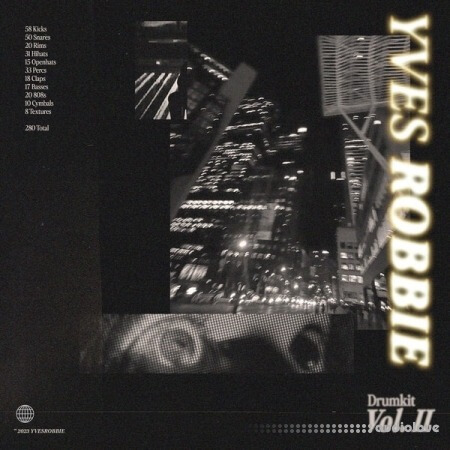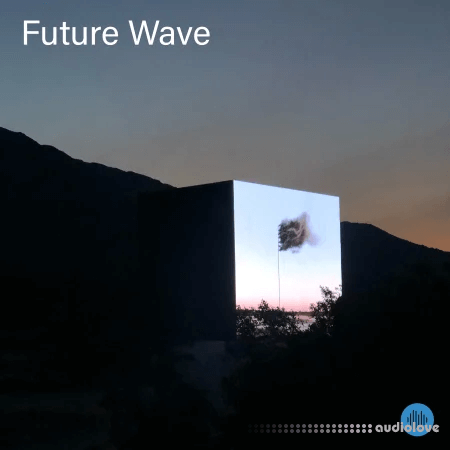Cinesamples CineBrass Sonore KONTAKT

P2P | 25 January 2020 | 7.11 GB
Sonore (adj.): resonant; with rich tone. When you see “sonore” written in a musical score, the composer is simply asking the musicians to play with the maximum resonance, body and tone of which they are capable. It is the opposite concept of brashness and blasting - “sonore” is a thick and warm sound. We set out to recapture trumpet and horn sections in which we maximized tone and body rather than concentrating solely on loud dynamics. You'll notice a wider, more open sound that takes up more room in the in the mix at a mezzo forte dynamic. We selected articulations specifically for the creation of melodies. Our greatest influence and inspiration was the organic processes employed by the great film composers of orchestral music. Recorded at the MGM Scoring Stage at Sony Pictures Studios in Los Angeles, these ensembles also come with vastly improved legato.
THE CINEBRASS FAMILYCineBrass Sonore is another great resource in the CineBrass Family.
See how it fits in...
MIXER
As with all our CineSymphony Series products, the front page provides our standard 4 mixes: Full, Close, Room, and Surround. The Full mix is the desk mix right from the MGM Scoring Stage using the Lexicon 480 and the Avalon 2055 EQ. The Close, Room, and Surround mixes are untouched and directly from the microphones on the stage. On the left are the standard CineSymphony mix presets. The Trumpets patches offer separate mixes of the Principle Trumpet (Tpt. 1) and Trumpets 2, 3, and 4.
REVERB
Each mix sends to the REVERB when the mix is on and the REVERB return is on. There are a few reverb presets in the pull down menu. By default, it's 90s Med Hall.
We suggest always keeping this on and set to the default amount. Why? Because we use this reverb partly in our legato engine. If you have this reverb set to OFF, the Verb Comp fader (Settings Page) will not work. If you need more, or a different kind of reverb, use a send in your DAW to give the patch some glossiness. We suggest staying away from overly dense and thick reverbs - the library seems to respond best to glossy, clear reverbs with some nice sheen. And remember there is no reason to ever subject a product recorded at the MGM scoring stage to a convolution reverb, for this space is already an end game sound and it doesn't need to be improved or modified. Adding a room to a room doesn't always sound better.
If you are ONLY using Close, Room, and/or Surround mixes, we suggest using Tims Room C because it matches the ambience of these mixes. Also try using Tims Room R. Since the Trumpets sit toward the right it will give a subtle reflection on the left.
KEYBOARD
The RED keyswitches are latching and represent the articulations from the pull down menu above the mix presets. The GREEN keyswitches are NON-latching and control the type of overlay at the beginning of each note, even within a legato passage. The amount is determined by velocity and a volume adjust on the Settings Page (below). In order they are Secco, Forte-piano, and Swell.
LEGATO SPEED
The Trumpets' internal legato engine responds naturally to the speed of your playing - speeding up and slowing down as you do. The SPEED knob is a global setting. Increase the speed to play less of the legato transitions and decrease the speed to include more of the transitions.
VERB COMP
The Verb Comp is the amount of reverb applied to the tails of outgoing notes during a legato performance. This adds to a more realistic performance.
LEG VOL
Leg Vol adjusts the overall volume of legato transition samples.
OVERLAY VOL
The Overlay Vol adjusts the amount of the overlay articulation selected by the GREEN keyswitches above (also determined by velocity).
REL VOL
This adjusts the volume of the note tails.
VIBRATO
Use CC2 to control Trumpet 1 vibrato. This adjusts the overall volume of those samples.
TAPE
Finally there is an optional tape saturation (OFF by default).
MIXER
The Horns include the same 4 mixes created the same way as Trumpets: Full, Close, Room, and Surround.
REVERB
We suggest the same as the Trumpets above. You may also try using Tims Room L. Since the Horns sit toward the left it will give a subtle reflection on the right.
KEYBOARD
The RED keyswitches are latching and represent the articulations from the pull down menu above the mix presets. The GREEN keyswitch is NON-latching and adds a SFZ overlay at the beginning of each note, even within a legato passage. The amount is determined by velocity and a volume on the Settings Page (below).
* The Horns Settings Page includes the same options as the Trumpets with the exception of Vibrato.
THAT CLASSIC SOUNDOver time, many subtle things have changed for trumpets and horns. The combined result of these changes yielded more powerful, weightier, and forward-sounding modern sections. Only a few decades ago, the sound was less brassy, more streamlined, cantabile, and quieter in general. Different tonguing and blending philosophies were favored. The sections play with great agility or force, then and now. They just sound different.
It's shocking that the 1990's are now considered a long time ago. Many titans of the session playing world of this period have retired. As they are replaced by their younger colleagues, certain principles of pedagogy and musicality have been retired as well.
In the control room, while many of the central philosophies have remained the same, modern recording seems to have evolved to use cleaner, higher bandwidth and less colored gear. It's now a slightly different sound, which some favor, some disdain, and most simply don't notice.
Last year, while recording something unrelated, the original pencil marked Jurassic Park session recall sheets popped up out of the filing cabinet for some nerdy ogling. Right there on this aging paper was the actual recipe used to record the orchestra for these landmark sessions. Our vision was clear - replicate this sound. We went to great lengths to do this while always referencing the recall sheet and using the memories of some of the MGM Scoring crew who were actually there.
- We rented the three exact modified Neumann M50 microphones used as the Decca Tree on the original sessions. They feature a unique hi-end crispness and transparency that is instantly recognizable. These microphones have mostly been retired since the early 2000's. We matched every other microphone on the recall sheet and set them up exactly as indicated on the recall sheet.
- In the control room we patched in the exact preamp settings on the exact same preamps that still are mounted in the control room to this day. Most of these are now retired and replaced by cleaner and less colored signal paths by companies that weren't created yet at the time.
- The favored Lexicon 480 hardware reverb unit was taken out of retirement and the exact reverb patch was dialed up. This was “THE” patch of the 90's for most of these recordings - it is so classic sounding and is also instantly recognizable.
- One of the sonically most interesting parts of the recipe is the use of the Avalon 2055 - a delicate Class A discrete Stereo Hardware EQ that colors the high end in the most unique and hi-fi way imaginable. Also retired in favor of other mastering EQs, this box is a gem. When used correctly, it gives the most glossy sheen imaginable on the overtones, and when used incorrectly gives the harshest of harshnesses.
The Musicians:
- Trumpet math: 1+1+2 = 4. In the 1990's, the venerable trumpet veterans of the day played on horns they individually favored instead of a horn dictated by the chart or principal. An A-list 4-trumpet ensemble of the early 90's was often made of one Eb Horn (played by the principal), one C horn (played by the second chair), and two Bb horns (played by third and fourth chairs). The differing sizes of these horns projects an imperfect yet thick series of overtones into the room - incredibly tutti sounding, like the blending of a violin section. Having the principal on a smaller horn also lends a tireless and effortless quality to the high octave. Some weight on the lower notes is lost on a smaller horn, but this is where the third and fourth chairs contribute on their larger Bb horns. Modern sections often tend to favor four Bb or four C trumpets.
- Principal players of the age, especially in the brass section, were the alphas. The idea of a democratic section where each player contributes an equal percentage of the sound wasn't a concept yet. This was especially true for trumpets. The principal was the loudest on a unison, the principal was loudest on a divisi chord, the principal hair-pinned louder, the principal was atop always. The other players knew and respected this, and instead contributed a tone full of supporting qualities to blend with the principal. The combination of three supporting trumpets and one piercing trumpet is a mainstay of this era. It has rarely been heard since. For this library we recorded the dynamics with this ratio in mind.
- Trumpet Vibrato: When playing tutti, Trumpet Ensembles do not use vibrato. Four trumpets vibrating at different speeds tend to sound more like a mariachi band and less like a classical trumpet section. When vibrato is heard within a section it is the principal carefully using his/her judgment when to vibrate.This is often at the apex of a phrase, a particular important note, or toward the end of a long hold. During this time, trumpets 2-4º will not vibrate at all. The vibrato we captured in this library was the principal player vibrating at the highest dynamic layer only. Use it as described above for realistic playing. However, be sure to bypass (using the bypass vibrato performance switch) on quick crescendo rips, since that would not be a proper use of it.
- A quieter, nobler tone. The overall volume of the brass section in soundtrack recording has increased over the years. This is partly due to upgraded mouthpieces, instruments, pedagogy, and partly due to the presence of highly brassy composer mockups. Upon hearing these hyped mockups, session players have been forced to emulate this sound in an effort to satisfy the composers writing them. While sometimes appropriate, this style of playing is now found in soundtracks of all styles, including ones where it is less appropriate. In the 90's, the median forte was a quieter and richer tone. Experiment with having the mod wheel about half way up, which would represent a “comfortable and sustainable” forte for session players. Ride the wheel into the higher zones to follow the phrase or for the most exiting moments only.
PATCH LIST01 CineBrass SONORE Trumpets Articulations.nki is the primary Trumpets patch. All subsequent Trumpets patches are drawn from this patch after changing the primary articulation from the pull down menu above the mix presets.
10 CineBrass SONORE Horns Articulations.nki is the primary Horns patch. All subsequent Horns patches are drawn from this patch after changing the primary articulation from the pull down menu above the mix presets.
02 CineBrass SONORE Trumpets Legato
03 CineBrass SONORE Trumpets Sustains
04 CineBrass SONORE Trumpets Secco
05 CineBrass SONORE Trumpets Forte Piano
06 CineBrass SONORE Trumpets Sforzando
07 CineBrass SONORE Trumpets Accent
08 CineBrass SONORE Trumpets Half Notes
09 CineBrass SONORE Trumpets Swells
10 CineBrass SONORE Horns Articulations
11 CineBrass SONORE Horns Legato
12 CineBrass SONORE Horns Sustains
13 CineBrass SONORE Horns Secco
14 CineBrass SONORE Horns Forte PianoACTIVE CC TABLEVelocity controls dynamics on short articulations also controls the overlay dynamic and amount on legato transitions and sustains.
CineBrass Sonore is scripted for Native Instruments' Native Kontrol Standard (NKS) format.
Works with the FREE version of Kontakt 5.7.2 and above.
home page:
https://bit.ly/38CGGk3
DOWNLOAD
Related News:
 Cinesamples 90s Retro Trumpets KONTAKT
Cinesamples 90s Retro Trumpets KONTAKTP2P | 16 March 2019 | 1 GB 90's Retro Trumpets is a faithful emulation of all things trumpet and all things recording from this magical time that crafted many of our childhoods. Thoroughly researched, this melody-making library resurrects the actual microphones and the forgotten trumpet techniques that gave these scores such unique color, tutti, and magnificence. Recorded at the MGM Scoring Stage...
 Cinesamples CineBrass CORE 1.7d KONTAKT
Cinesamples CineBrass CORE 1.7d KONTAKTP2P | 11 March 2019 | 10.97 GB The CineBrass Core Library is Cinesamples’ orchestral brass sample library for Kontakt. Recorded at the world famous SONY Pictures Scoring Stage in Los Angeles, and mixed by veteran legend Dennis Sands (Oz: the Great and Powerful, Argo, Avengers, Back to the Future, Forrest Gump, Shawshank Redemption, American Beauty).The CineBrass Core Library covers the essentials...
 Cinesamples CineBrass PRO v1.7a KONTAKT
Cinesamples CineBrass PRO v1.7a KONTAKTP2P | 11 March 2019 | 20 GB CineBrass PRO is the expansion to the popular CineBrass Core library. CineBrass PRO is a completely separate and unique library comprised of entirely new orchestral brass sample content, using the first-call Los Angeles musicians at the SONY Scoring Stage, mixed by Dennis Sands. Our CineBrass CORE library, released in June 2011, covers the essentials of the orchestral...
 Cinesamples CineBrass CORE v1.6 KONTAKT
Cinesamples CineBrass CORE v1.6 KONTAKTFANTASTiC | 08 June 2016 | 9.78 GB The CineBrass Core Library is Cinesamples’ orchestral brass sample library for Kontakt. Recorded at the world famous SONY Pictures Scoring Stage in Los Angeles, and mixed by veteran legend Dennis Sands (Oz: the Great and Powerful, Argo, Avengers, Back to the Future, Forrest Gump, Shawshank Redemption, American Beauty).The CineBrass Core Library covers the...




Comments for Cinesamples CineBrass Sonore KONTAKT:
No comments yet, add a comment!